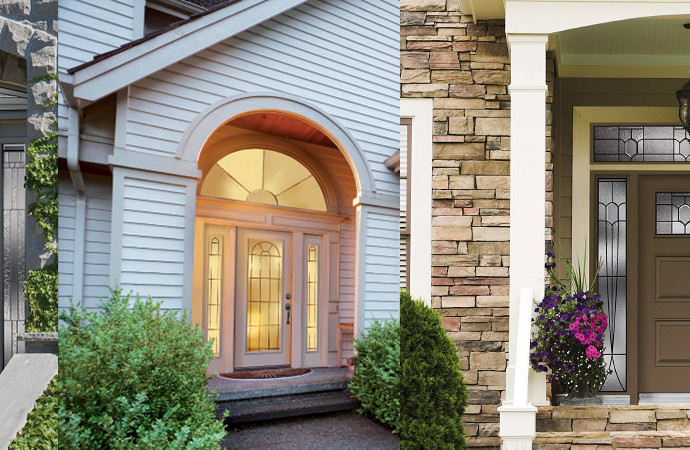Exterior, entry, entrance and vinyl patio doors replacement and installation in Mississauga.
Doors create a gateway into your home in more ways than one. While an entry point from the outside, however, a door may still create a pathway for the elements when closed. Often, this is attributed to age, be it wear and tear or dated materials, but a crack between the wall or old weather stripping indicates that both air is leaving and dollars spent on energy are increasing – and your home, ultimately, is far less energy efficient than it could be.
If you’re trying to cut down on heating and cooling costs with your doors, which factors could ultimately be blocking your efforts?
Weather Stripping and Door Sweeps
Weather stripping, which lines the top and side of your door, and the sweep, between the threshold and bottom, form a barrier preventing the elements from entering. When the material experiences wear and tear or, in a worst-case scenario, ends up damaged, its effectiveness diminishes how well the door protects your home.
As a recommendation before a homeowner purchased a replacement door, consider replacing the weather stripping and sweep first. Often, these parts can be found in kits and, with the right size, are quickly installed.
Glass
In other cases, the door’s glass is your worst enemy. Particularly for patio doors, glass takes up a large amount of surface area; while beautiful, this factor may ultimately be cooling any air that enters your home, thus causing you to increase the temperature.
With single and dual pane glass, four factors cause heat to leave or cool:
• Conduction, or when heat is transferred through the glass. Because of this process, many modern replacement doors come equipped with less-conductive glazing.
• Radiation, or when heat travels as infrared energy through the glass.
• Convection, a circular process in which air moves downward because it is cooled and becomes denser near your doors and windows.
Along with glazing, low-emissivity glass, which reflects energy and allows visible light through, is turning into an energy-efficient essential for many patio and entry doors.
Installation
Who installed your doors? If they were added as part of a do-it-yourself project, there’s a greater chance that gaps between it and the wall or around hinges are present. To check just how well the door is attached, look at how loose the hinges are and how well it’s hung. If you can see gaps of light around the edges, there is a good chance UV rays and even moisture may be coming into your home and potentially damaging the interior.
In this scenario, fixing the poor installation job may allow the door to function up to its full potential.

